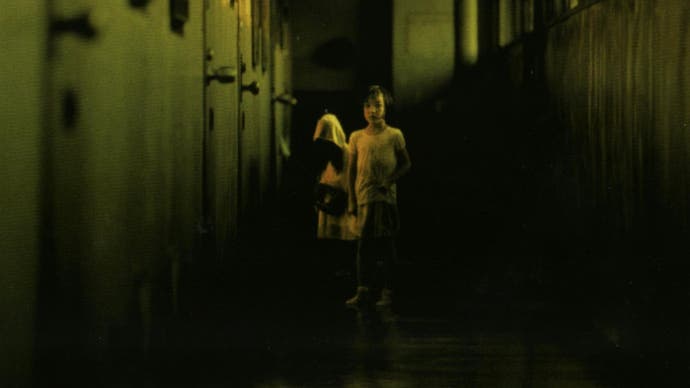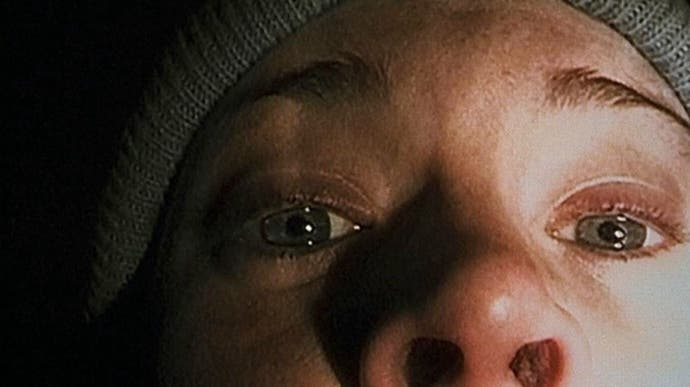How survival horror reinvented itself
Always watching your back.
Between major trips visiting different relatives in Pakistan many years ago, us kids were allowed to be entertained at home with video rentals. I don't remember ever going to a store myself, so I have no idea who ended up choosing Wes Craven's Wishmaster for the tiny CRT television. And I don't remember much about it, except it was goofy, gross and strange all at once. Little did I know, as I didn't have access to dial-up internet in rural South Asia, there was a major shift occurring for the horror genre, in both video games and film.
It all started around the turn of the century, with two films in both the Far East and the West, their influence still a major source of artistic inspiration. First was Japanese director Hideo Nakata's film Ring (or Ringu) in 1998, with many of us becoming familiar with it through the subsequent Hollywood remake starring Naomi Watts. You've probably seen it or are at least aware of it by now, but the plot revolves around an infamous videotape, which results in the mysterious death of its viewers seven days after they watch it. The other film is The Blair Witch Project, a film presented as "found footage", that follows a group of friends camping in the woods to find out whether or not there is a Blair Witch that haunts and kills locals.
The reason why these films still stand out today is because they showed that true horror lies with what can't be seen or understood, changing the meaning of visual horror. This emphasis on psychological horror instead was translated into games too, with developers foregoing blood and guts and instead focussing on fog and shadows. Arguably, the best examples of this are still those games from that specific period, such as Silent Hill, Forbidden Siren and Fatal Frame.

What these games do so well is produce worthwhile and interesting stories, just like the aforementioned films. For example, Forbidden Siren takes place in a secluded village with a religious local populace. A sudden earthquake creates some mystifying changes in this small world, and the village ends up being surrounded by a sea of red. The gameplay involves taking control of different characters and piecing together the story of survival. This is so much more original than the usual fare of bizarre monsters and zombies coming out of nowhere that need to be shot down, multiple times, often directly in the face (no matter how satisfying that can also be).
This focus on making things unsettling instead of purely gruesome is a truly wonderful lesson we've been given by Japanese culture. Another example can be seen in one of Nakata's other films, Dark Water. It's about a single mother who moves into a shoddy apartment with her young daughter, only to become disturbed by a strange leak coming from the ceiling. The film demonstrates genius by contextualising its horror against a backdrop of childhood abandonment and mental illness. Not only are these themes absent in many horror films and games, they're sometimes - wrongly - considered a nuisance across all media, with creators often choosing more tolerable or sanitised subjects. The climax of Dark Water is followed by a scene that manages to be sad, uncomfortable and touching all at once. Of course, Dark Water wasn't spared from a Hollywood adaptation either and other films were (poorly) replicated too, such as the Grudge. It shows just how much clout and deference we had for Japanese horror.
Unfortunately, games and movies produced in the West diverged from these tactics. For example, apart from the completely forgotten (and poorly-titled) game The Suffering, blood and gore were the servings being offered. Heck, "torture porn" became an entire genre, with the Saw and Hostel films. Some games on the other hand, have tried to marry both horror and raw tension in more recent years, with some notable successes such as the Dead Space series.

Personally, when wanting to feel pure pressure outside of hitting a daily word count, I always choose to switch on an early Splinter Cell game instead, the stealth genre providing as many (if not more) frights as the horror world. But I also think there's merit in the unknown sometimes being a great source for shocks, or to put you in a state of high alert, like Area X in Rez Infinite, or smaller games such as Antichamber. They're enthralling enough to captivate you and leave your mouth wide open, closing shut immediately when the buzz of your mobile phone next to you brings you back to reality.
As for horror games, "jump scares" tuned finely for the YouTube audience appear to have a stranglehold for now, thanks to games such as Five Nights at Freddy's and Outlast. That's not entirely a bad thing though. I finally decided to open my copy of Resident Evil 7 last week, an acclaimed return to survival horror for a series that diverged into stylish action horror instead in previous years. I don't think even 90 minutes had passed before I had a jump scare, inducing the expected, "Argh! F*** off, okay, that's it!" reaction. Naturally, I decided to sell my copy straight away after that. But what I did notice in the opening few scenes was an iconic image reproduced from The Blair Witch Project, which, without giving much away, involves the uninteresting act of standing. It seems these templates are ready to influence our games all over again, asking whether we're ready to absorb the incoming onslaught of tension and spontaneous shocks. I don't know about you, but I'm prepared for the challenge.

